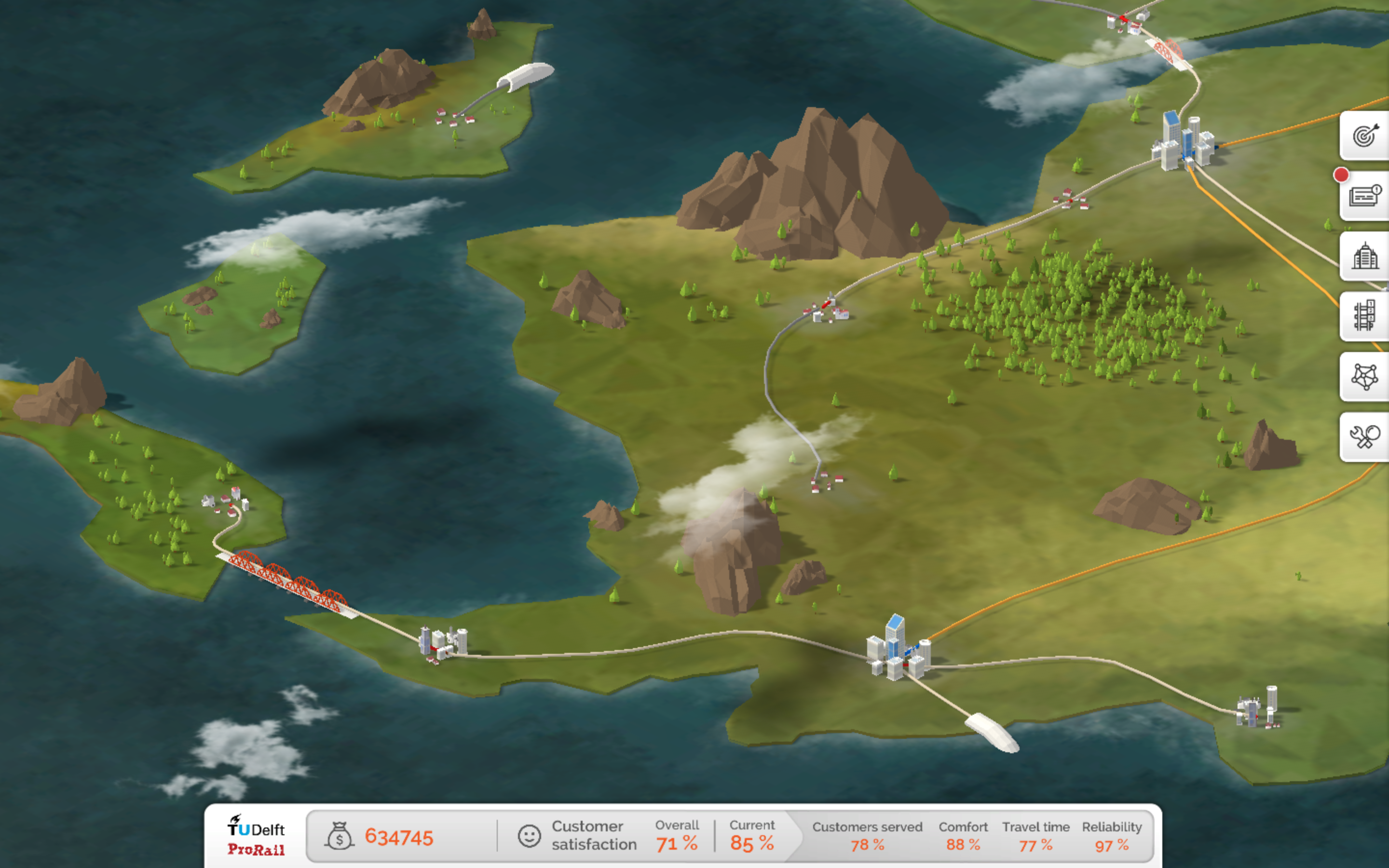5.6 Extra: Railway Strategy Game
Course subject(s)
5. Monitoring and Maintenance
Welcome to The Land of Anticipation, Timed Tactics And Gruelling Abstruseness – ATTAGA
Attaga is a country with 40 cities and villages and their happiness depends on you.

Cities have to be connected in an ever-changing setting, and you will need to deal with wear, capacity, developments and disturbances. The performance of your railway system over time is based on choices and priorities made and set by you as the player, within an increasingly complex situation.
Communities come in five sizes; 200, 500, 1000, 2500 and 5000 people and can grow over time. All communities above 500 inhabitants need to be connected to the railway network, whereas villages of 200 won’t affect your score in a negative way (but watch out for population growth over time!).
Goals
The main goal of the game is to have a high percentage of customer satisfaction over time. This is based on the average customer satisfaction measured continuously while playing. The current value is visible at the bottom of the screen, next to the overall percentage, and is influenced by four main factors:
Customers served: Does your network meets the demand of the different cities?
Comfort: Can people travel directly or do they have to switch lines?
Travel time: How close can you get to the fastest possible connection?
Reliability: How often do lines break down and how fast are they fixed?
As a user, you can create new connections between cities using local and interstate trains, create high-speed connections between your larger cities and connect the rail network to foreign countries. In hilly areas only mountain trains can be used. The main menu consists of six main tabs, with two important actions within ‘cities’ and ‘tracks’.
Missions: Find your next mission and see what you have accomplished so far. Financial rewards give you possibilities to develop your network faster.
Events: Get updates on city growth, track status and local weather circumstances. Where did a track break down and which area needs your attention?
Cities: Oversee all cities and villages on the map with local properties to make correct decisions and set priorities and check if there is a passing station.
>> Connect: Once you click on a specific city, this button appears. Use it to create a new connection or extend an exiting line from a selected city, choosing type of track, train frequency and number of switches.
Tracks: Get a list of all your tracks and check their fail rate. Use monitoring trains to get more detailed information on the status of your tracks.
>> Maintain: In the track list, you have this button. Use it to direct your crews to maintain or repair tracks. Be aware that this costs time and you only have three crews at your disposal.
Lines: Find all created lines with start and end station. Update the frequency to meet the changing demand, as more people start using your network.
Control: Gain knowledge on your track status by buying and updating a monitoring train and upgrade your control system for higher train frequency.
Good to know
– Within the game you generate money by serving customers (tickets) and by accomplishing missions.
– Red dots in the menu indicate either the occurrence of a new event or the successful mission.
– Building, maintaining and repairing tracks costs time, resulting in temporary unavailable crews.
– Small/large bridges/tunnels, national parks, length, type of train/track and frequency increase costs.
– Fail rate is an indication of wear and tear; tracks can always break down due to external factors.
– Repairing after a track breaks down costs three times as much compared to maintaining it in time.
– Interstate trains can pass local trains at smaller stations using the same line.

Railway Engineering: An Integral Approach by TU Delft OpenCourseWare is licensed under a Creative Commons Attribution-NonCommercial-ShareAlike 4.0 International License.
Based on a work at https://ocw.tudelft.nl/courses/railway-engineering-integral-approach/.




